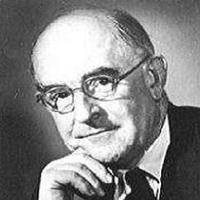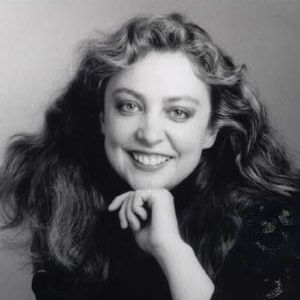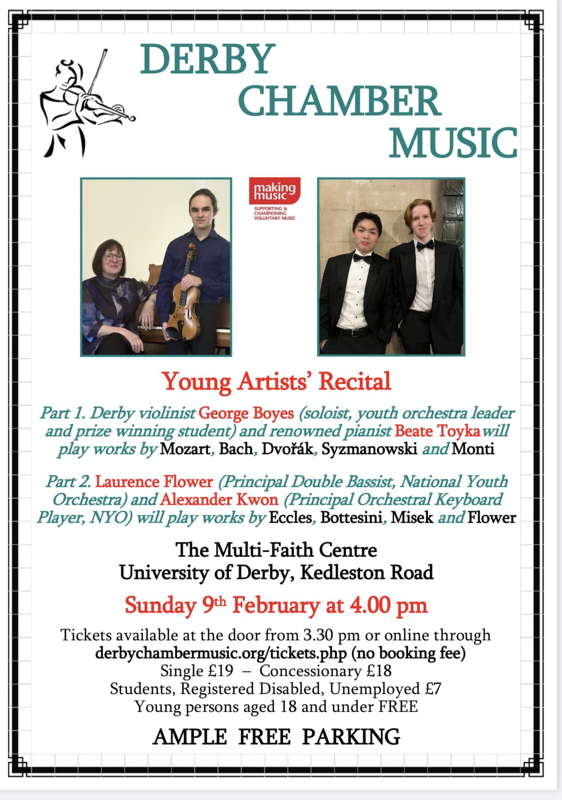 DISCUSSION: John Dante Prevedini leads a discussion about Music and the Visual World, including contributions from Celia Craig, Halida Dinova and Yekaterina Lebedeva.
DISCUSSION: John Dante Prevedini leads a discussion about Music and the Visual World, including contributions from Celia Craig, Halida Dinova and Yekaterina Lebedeva.
 SPONSORED: Ensemble. Unjustly Neglected - In this specially extended feature, Armstrong Gibbs' re-discovered 'Passion according to St Luke' impresses Roderic Dunnett.
SPONSORED: Ensemble. Unjustly Neglected - In this specially extended feature, Armstrong Gibbs' re-discovered 'Passion according to St Luke' impresses Roderic Dunnett.
All sponsored features >>
 SPONSORED: An Outstanding Evening - Bill Newman listens to American pianist Rorianne Schrade.
SPONSORED: An Outstanding Evening - Bill Newman listens to American pianist Rorianne Schrade.
All sponsored features >>
Finely Judged
MIKE WHEELER was at Derby Chamber Music's Young Artists' Recital
Derby Chamber Music's Young Artists' recital, a new venture for the organisation, introduced us to performers we can expect to hear from again - Multi-Faith Centre, Derby University, Derby, UK, 9 February 2025. In the first half, seventeen-year-old Derby violinist George Boyes was joined by Benjamin Frith (replacing Beate Toyka, who unfortunately had to withdraw with an injured hand). The first movement of Mozart's Violin Sonata in F, K 377, got off to a bold start, and continued with plenty of impetus, and some neatly-turned dialogues between the two players.

Poster for the concert on 9 February 2025
After a deeply thoughtful reading of the opening Adagio from J S Bach's Sonata for solo violin No 1, Boyes and Frith joined up again for the second movement of Dvořák's Violin Concerto, which Boyes is due to play complete with Derby Concert Orchestra in May. They steered their performance deftly from gentle musing into something more forceful. Inevitably, Dvořák's orchestral colours were missed, but Boyes knew when to let the violin line take flight, and Frith was a sympathetic partner. That was evident, too, in 'La Fontaine d'Aréthuse' (Arethusa's Fountain), the first of Szymanowski's Mythes. Boyes handled the tricky high-lying opening with complete assurance, with Frith providing a vivid wash of piano sound. The ascent to the climax, and its dissolution at end, were both finely judged.
They ended their half of the recital with Vittorio Monti's great violin party-piece, Csárdás, graceful first section leading to foot-tapping second with winning charm and energy.
After the interval, it was the turn of double bassist Laurence Flower, currently leading the bass section in the National Youth Orchestra of Great Britain, and pianist Alexander Kwon, studying at Magdalene College, Oxford.
Henry Eccles was a member of a musical family active in London in the late seventeenth and early eighteenth centuries, who eventually moved to Paris. He published a set of sonatas for violin and continuo in 1720, of which No 11 has been transcribed for double bass and piano at least twice, including the version we heard, by New York teacher and orchestral player Frederick Zimmerman. I'm not sure his transcription was totally convincing, but Flower and Kwon did their best to keep it airborne.
Giovanni Bottesini was something of a nineteenth-century double bass megastar. In the first and most popular of his three Elegies, Flower balanced the agreeable hum of the bass's bottom notes with eloquent lyricism higher in the instrument's range. Czech bassist Adolf Mišek published three sonatas, the second in 1910. The performance showed how forceful the instrument can be, when needed, and it can also dance, as in the third movement furiant.
Flower's own Melancolie ended the programme. Unfortunately, from where I was sitting, it was impossible to catch anything of his quietly-spoken introduction, but the music was expressively varied, from ruminative opening and close, to more active middle section, with some astonishing writing at the top of the instrument's range. Flower also made sure that the piano had its share of melodic interest.
Copyright © 23 February 2025
Mike Wheeler,
Derby UK



